Known for Performance artist Name Chris Burden | Role Artist | |
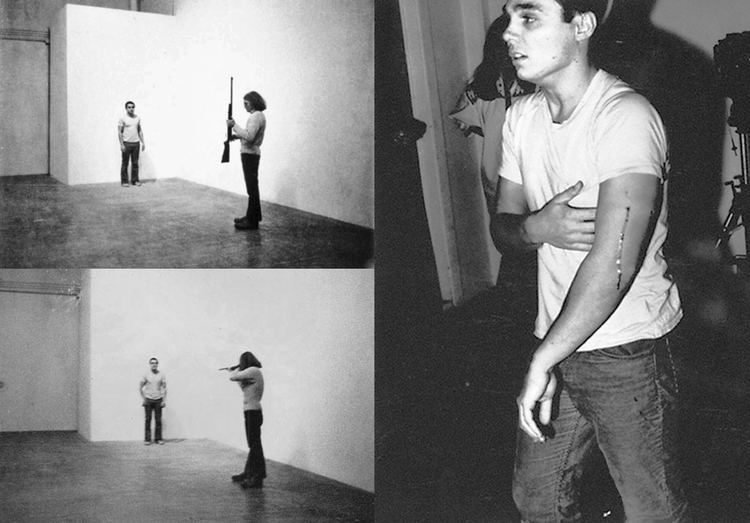 | ||
Books Chris Burden, Talking Art 1 Periods Conceptual art, Contemporary art Similar People Vito Acconci, Nancy Rubins, Bruce Nauman, Joseph Beuys, Dennis Oppenheim | ||
Artist conversation with chris burden
Christopher Lee "Chris" Burden (April 11, 1946 – May 10, 2015) was an American artist working in performance, sculpture and installation art.
Contents
- Artist conversation with chris burden
- Metropolis ii by chris burden the movie
- Early life and career
- Early performance art
- Later work
- Exhibitions
- Collections
- Art market
- Personal life
- References
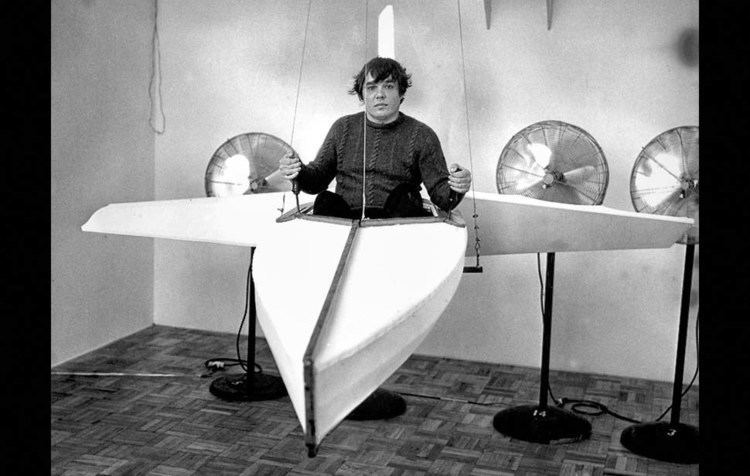
Metropolis ii by chris burden the movie
Early life and career
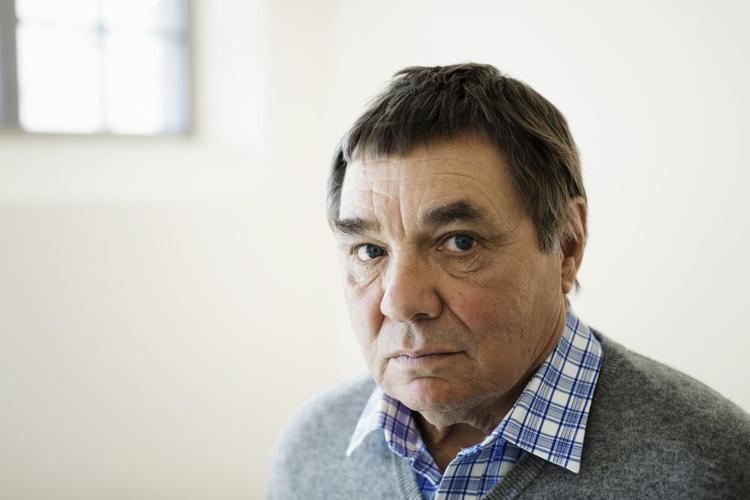
Christopher Lee Burden, the son of Robert Burden, an engineer, and Rhoda Burden, a biologist, was born in Boston in 1946 and grew up in Cambridge, Massachusetts, France and Italy. When he was 12, he endured emergency surgery — performed without anesthesia — on his left foot after having been severely injured in a motor-scooter crash on Elba; during the long convalescence that followed, he became deeply interested in visual art, particularly in photography.
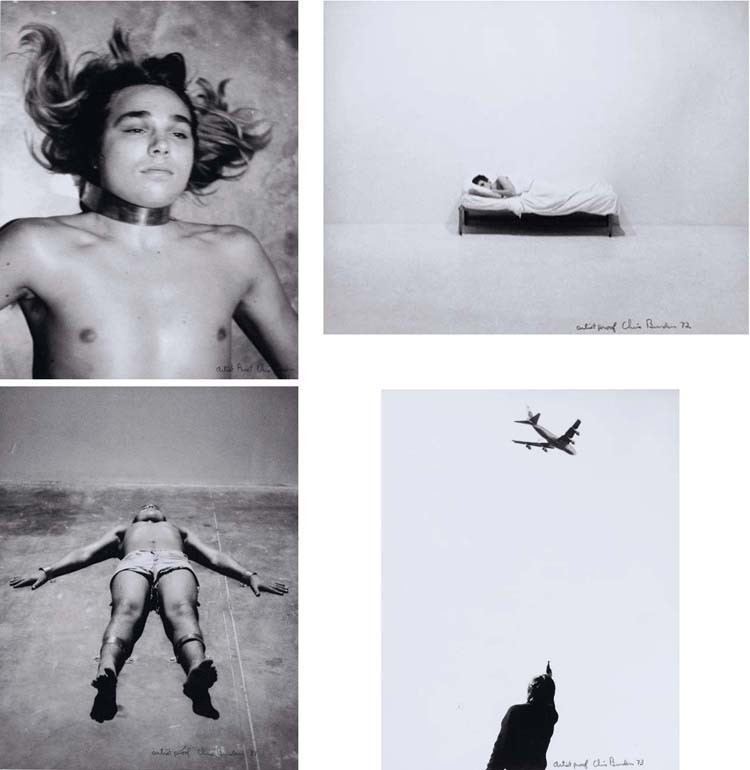
Burden studied for his B.A. in visual arts, physics and architecture at Pomona College and received his MFA at the University of California, Irvine – where his teachers included Robert Irwin – from 1969 to 1971.
Early performance art

Burden began to work in performance art in the early 1970s, he made a series of controversial performances in which the idea of personal danger as artistic expression was central. His first significant performance work, Five Day Locker Piece (1971), was created for his master’s thesis at the University of California, Irvine. His most well-known act from that time is perhaps the 1971 performance piece Shoot, in which he was shot in his left arm by an assistant from a distance of about sixteen feet (5 m) with a .22 rifle. Other performances from the 1970s were Match Piece (1972), Deadman (1972), B.C. Mexico (1973), Fire Roll (1973), TV Hijack (1972), Doomed (1975) and Honest Labor (1979).
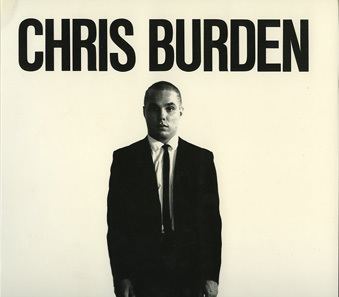
One of Burden’s most reproduced and cited pieces, Trans-Fixed took place on April 23, 1974 at Speedway Avenue in Venice, California. For this performance, Burden lay face up on a Volkswagen Beetle and had nails hammered into both of his hands, as if he were being crucified on the car. The car was pushed out of the garage and the engine revved for two minutes before being pushed back into the garage.
Later that year, Burden performed his piece White Light/White Heat at the Ronald Feldman Gallery in New York. For this work of experiment performance and self-inflicting danger, Burden spent twenty-two days lying on a triangular platform in the corner of the gallery. He was out of sight from all viewers and he could not see them either. According to Burden, he did not eat, talk, or come down the entire time.
Several of Burden's other performance pieces were considered somewhat controversial at the time: another "danger piece" was Doomed (1975), in which Burden lay motionless in a gallery at the Museum of Contemporary Art, Chicago under a 5 ft × 8 ft (2 m × 2 m) slanted sheet of glass near a running wall clock. Burden planned to remain in that position until someone interfered in some way with the piece. Forty-five hours and ten minutes later, museum employee Dennis O'Shea placed a pitcher of water within Burden's reach at which point Burden rose, smashed the glass, and took a hammer to the clock, thus ending the piece.
By the end of the 1970s, Burden turned instead to vast engineered sculptural installations. In 1975, he created the fully operational B-Car, a lightweight four-wheeled vehicle that he described as being "able to travel 100 miles per hour and achieve 100 miles per gallon" (160 km/h and 43 km/l). Some of his other works from that period are DIECIMILA (1977), a facsimile of an Italian 10,000 Lira note, possibly the first fine art print that (like paper money) is printed on both sides of the paper; The Speed of Light Machine (1983), in which he reconstructed a scientific experiment with which to "see" the speed of light; and the installation C.B.T.V. (1977), a reconstruction of the first ever made Mechanical television.
In 1978, he became a professor at University of California, Los Angeles, a position from which he resigned in 2005 due to a controversy over the university's alleged mishandling of a student's classroom performance piece that echoed one of Burden's own performance pieces. Burden cited the performance in his letter of resignation, saying that the student should have been suspended during the investigation into whether school safety rules had been violated. The performance allegedly involved a loaded gun, but authorities were unable to substantiate this.
In 1979, Burden first exhibited his notable Big Wheel exhibition at Rosamund Felsen Gallery. It was later exhibited in 2009 at the Museum of Contemporary Art, Los Angeles.
In 1980, he produced The Atomic Alphabet – a giant, poster-sized hand-colored lithograph – and performed the text dressed in leather and punctuating each letter with an angry stomp. Twenty editions of the work were produced and are largely in the possession of museums, including SFMOMA and the Whitney Museum of American Art.
Later work
Many of Chris Burden’s later sculptures are intricate installations and structures consisting of many small parts. A Tale of Two Cities (1981) was inspired by the artist’s fascination with war toys, bullets, model buildings, antique soldiers, and a fantasy about the twenty-fifth century—a time when he imagines the world will have returned to a system of feudal states. The room-filling miniature reconstruction of two such city-states, poised for war, incorporates 5,000 war toys from the United States, Japan, and Europe – on a 1,100-square-foot (100 m2), 20-short-ton (18 t) sand base surrounded by a “jungle” made of houseplants. The gallery-sized installation All the Submarines of the United States of America (1987) consists of 625 identical, small, handmade, painted-cardboard models that represent the entire United States submarine fleet dating from the late 1890s, when submarines entered the navy’s arsenal, to the late 1980s. He suspended the cardboard models on monofilaments from the ceiling, placing them at various heights so that as a group they appear, to be a school of fish swimming through the ocean of the gallery space. In 1992, he exhibited his Fist of Light during the Whitney Biennial exhibition in New York. It consisted of a sealed kitchen-sized metal box with hundreds of metal halide lamps burning inside. It required an industrial air conditioner to cool the room.
Hell Gate (1998), is a 28-foot-long (8.5 m) scale model, in Erector and Meccano pieces and wood, of the dramatic steel-and-concrete railroad bridge that crosses the Hell Gate segment of the East River, between Queens and Wards Island. In 1999, Burden's sculpture When Robots Rule: The Two Minute Airplane Factory was shown at the Tate Gallery in London. It was a "factory-like assembly line which manufactures rubber-band-powered model aeroplanes from tissue paper, plastic and balsa wood". Each plane had a propellor powered by a rubber band, and when each was completed, at a rate of one every 2 minutes, the machine launched it to fly up and circle around the gallery. Unfortunately, the machine was non-functional for at least two months of the installation, leading World Sculpture News to question the intent of the piece and remark that "the work illustrated that robots, in fact, don’t rule everything, and for the time being, are still subjected to individual and groups shortcomings."
First presented at the Istanbul Biennial in 2001, Nomadic Folly (2001) consists of a large wooden deck made of Turkish cypress and four huge umbrellas. Visitors can relax and linger in this tent-like structure, replete with opulent handmade carpets, braided ropes, hanging glass and metal lamps, and wedding fabrics embroidered with sparkling threads and traditional patterns.
In 2005, Burden released Ghost Ship, his crewless, self-navigating yacht which docked at Newcastle-upon-Tyne on 28 July after a 330-mile (530 km) 5-day trip from Fair Isle, near Shetland. The project was commissioned by Locus+ at a cost of £150,000, and was funded with a significant grant from Arts Council England, being designed and constructed with the help of the Marine Engineering Department of the University of Southampton. It is said to be controlled via onboard computers and a GPS system; however, in case of emergency the ship is 'shadowed' by an accompanying support boat.
In 2008, Burden created Urban Light, a sculptural work consisting of 202 found antique street lights that had once stood around Los Angeles. He bought the lights from the contractor who installed Urban Light, Anna Justice. The work is on view outside of the Los Angeles County Museum of Art, and the solar-powered lights are illuminated at dusk.
In the summer of 2011, Burden finished his kinetic sculpture, Metropolis II, which took four years to build. It was installed at LACMA in Fall 2011. "Chris Burden's Metropolis II is an intense kinetic sculpture, modeled after a fast paced, frenetic modern city."
Suspended from opposite ends of a telescoping balance beam of velvety rusted steel are a restored bright yellow 1974 Porsche sports car and a small meteorite, Porsche With Meteorite (2013) balances perfectly, with the heavier car much closer to the vertical support.
Burden's last completed project — a working dirigible that flies in perfect circles called Ode to Santos Dumont after the pioneering Brazilian aviator — was unveiled at a private Gagosian Gallery event outside of Los Angeles shortly before his death and later installed as a tribute at LACMA. Also, the New Museum decided to have Twin Quasi-Legal Skyscrapers (2013), two 36-foot-tall towers created for the museum’s retrospective on Burden, remain on the institution’s roof for several months in tribute. At the time of his death, Burden was also working on a watermill next to Frank O. Gehry's aluminum tower at LUMA Arles which remained uncompleted.
Exhibitions
In 2013, the New Museum presented “Chris Burden: Extreme Measures,” an expansive presentation of Burden’s work that marked the first New York survey of the artist and his first major exhibition in the United States in over twenty-five years. Burden has also had major retrospectives at the Newport Harbor Art Museum, Newport Beach, California (1988) and the Museum of Applied Arts, Vienna (1996). Other solo exhibitions include "14 Magnolia Doubles" at the South London Gallery, London (2006); "Chris Burden" at the Baltic Center of Contemporary Art, Gateshead (2002); and "Tower of Power" at the Museum Moderner Kunst Stiftung Ludwig, Vienna (2002). In 1999 Burden exhibited at the 48th Venice Biennale and the Tate Gallery in London. In the summer of 2008, Burden’s 65-foot-tall (20 m) skyscraper made of one million Erector set parts, titled What My Dad Gave Me, stood in front of Rockefeller Center, New York City.
Collections
Burden's work is featured in prominent museum collections such as the LACMA and the Museum of Contemporary Art, Los Angeles; the Whitney Museum of American Art and the Museum of Modern Art, New York; the Tate Gallery, London; the Middelheimmuseum, Antwerp, Belgium; the Inhotim Centro de Arte Contemporanea, Brazil; the 21st Century Museum of Contemporary Art, Kanazawa, Japan; the Museum of Contemporary Art, Chicago, among others.
Art market
Burden was represented by Gagosian Gallery from 1991 until his death. In 2009, a deal that Gagosian Gallery had struck to buy $3 million in gold bricks for Burden's work One Ton, One Kilo was frozen when it turned out that the bricks had been acquired from a Houston-based company owned by financier Allen Stanford, who was later charged by the U.S. Securities and Exchange Commission and sentenced to 110 years in prison for cheating investors out of more than $7 billion over 20 years in one of the largest Ponzi schemes in American history. As of 2013, the gallery's gold has been frozen while the SEC investigates Stanford and One Ton One Kilo cannot be mounted until the gold bullion is released.
Personal life
Burden was married to multi-media artist Nancy Rubins. He lived and worked in Los Angeles, California. His studio is located in Topanga Canyon. From 1967 to 1976, Burden was married to Barbara Burden, who documented and participated in several of his early artworks.
Burden was referenced in David Bowie's 1977 song "Joe the Lion", Laurie Anderson's 1977 song "It's Not the Bullet that Kills You – It's the Hole (for Chris Burden)" on the double LP "Airwaves", and in the diary of Nathan Adler from the David Bowie album "1. OUTSIDE". He was also mentioned in the Jeff Lindsay book "Dexter by Design", and in Norman Mailer's book "The Faith of Graffiti". The poem "Doomed (1975)" by David Hernandez in his 2011 collection Hoodwinked describes the Burden installation of the same name in Chicago.
On May 10, 2015 Burden died 18 months after having been diagnosed with melanoma. He was 69.
